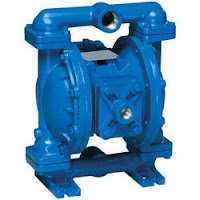Cavitation refers to the erosive action on the pump impeller and casing by the explosion of bubbles which form in the medium.
When the liquid passes through the impeller, the pressure drops in certain areas, this causes the liquids to drop below the vapor pressure. As a result, bubbles are formed. When these bubbles break, the energy released can remove small amounts of materials from the impeller and the casing.
Cavitation can cause the housing of the pump to fail. In some instances, it can cause damage to the impeller. A damaged impeller can get unbalanced and cause high vibration. The outflow of the pump will also be affected
Cavitation in Pumps is classified into two types
Suction Cavitation
In suction cavitation, inadequate flow into the pump from the suction side due to blocked filters can cause low pressure in the eye of the impeller, this causes bubbles to form. These bubbles pass to the discharge side where they encounter high pressure. This causes the bubbles to implode releasing energy which can damage the impeller.
Discharge Cavitation
This occurs due to reduced outflow from the pump. If the output of the pump is reduced, the pressure increases. The liquid is unable to exit the pump and recirculates within the pump. This high speed flow causes a vacuum between the liquid and the wall of the pump housing. This causes bubbles to form and damage the inner surface of the casing.
























